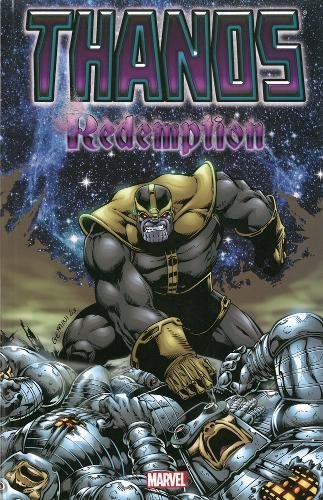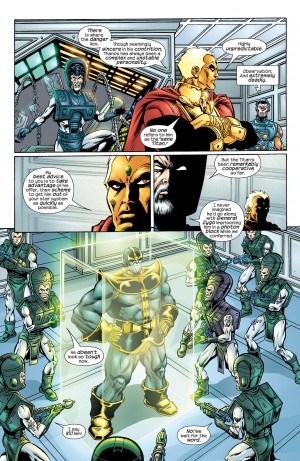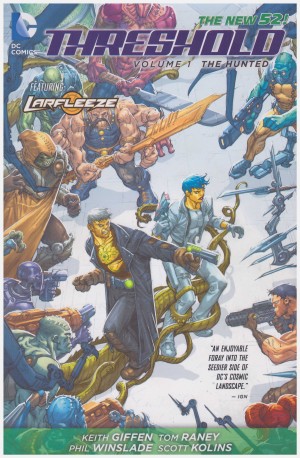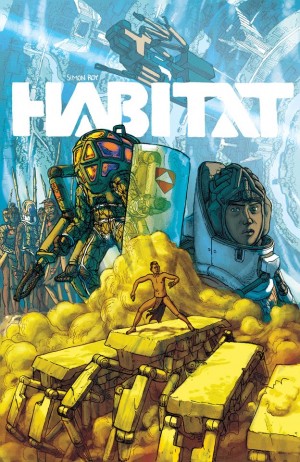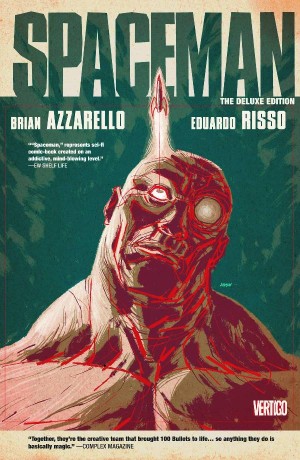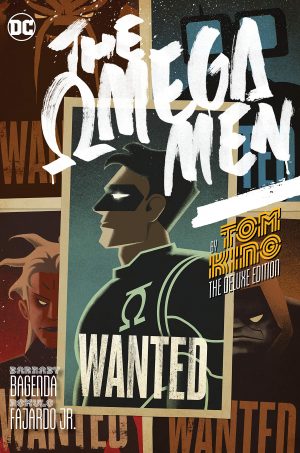Review by Ian Keogh
Redemption is an awkward combination of two graphic novels issued a decade earlier as Epiphany and Samaritan. Beyond the presence of Thanos they really only have two connecting points. One followed the other when issued as monthly comics, and both are from a period when Thanos was actively contemplating his role in the universe following events detailed in Infinity Abyss.
Were it slightly more chucklesome it would be tempting to compare Jim Starlin’s opening story to My Name is Earl, with Thanos in the lead role. Having attained the power of the universe, Thanos found it wanting, and his actions thereafter have him pursuing a path of redemption for his previous acts. He decides to begin his galactic contrition tour by surrendering himself to the Rigellians, whose planet he destroyed, but rapidly learns their current habitation is also under threat.
Starlin’s plot elegantly pits Thanos against another cosmic heavyweight who, unusually, has been tricked, so Thanos is able to pursue his redemption while still employing the full devastation of his abilities. Several players from Starlin’s repertory cast have a part to play, most prominently Adam Warlock as sounding board and Pip the Troll as teleporter in chief. There’s an intriguing plot at the core of events, Starlin’s art is suitably spectacular and he wrings entertainment from the mix without diminishing any of the cast.
Keith Giffen takes a different approach for the succeeding material. His plot is deliberately dense, and full understanding requires figuring out the speech patterns of assorted alien beings. Giffen takes a step away from the characters Starlin associates with Thanos, supplanting them with other beings known to regular Marvel readers, the most effective being Skreet, who resembles a fairy, but has history and power.
Thanos arrives on a power generating planet at the end of the universe drawn for unknown reasons. His presence is inflammatory, inducing assorted groups to take action, and among the chaos there’s a confrontation with another incredibly powerful being. This is all drawn in impressive fashion by Ron Lim, who appears to take more time over a single page than over entire comics in the past. Lim brings the environment to life. You can believe this is a particularly miserable form of incarceration where there’s a frustrating limited freedom and ever present danger.
Giffen and Lim’s opening four chapters are an offbeat treat in which Thanos is more catalyst than provocateur, and this is almost self-contained. The problems begin when they move beyond those four chapters. What starts in intriguing fashion is rushed to an unsatisfactory conclusion due to cancellation of the serialised comic in which the work first appeared.
The contrasting approaches to the same character would really have been better left separated, but anyone able to appreciate both now has this option.
